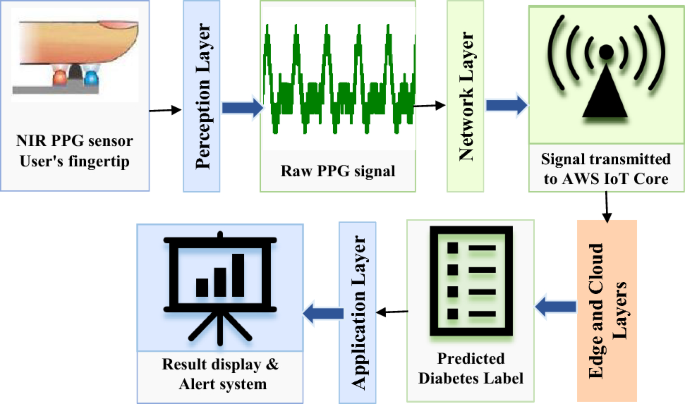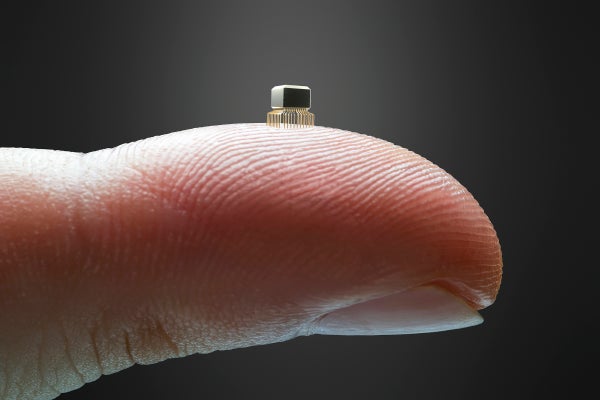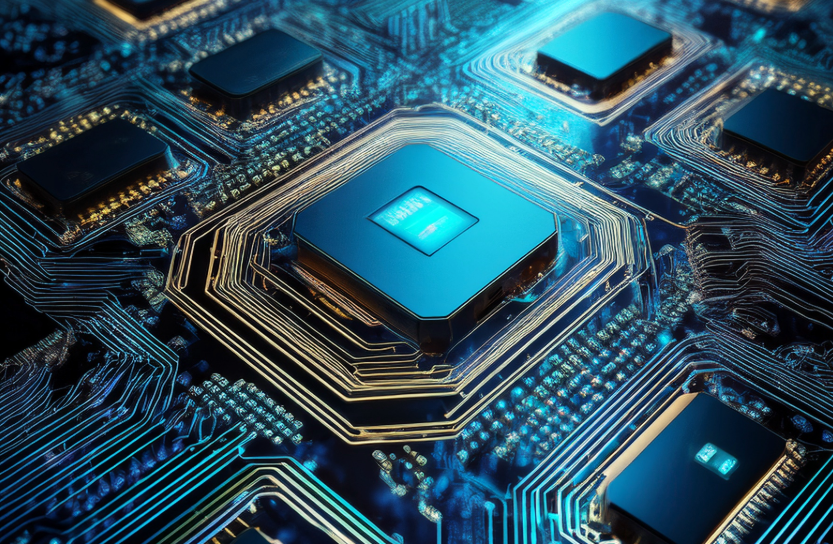The concept of a “smart office” has evolved significantly over the past decade. What began with connected coffee makers and automated lighting has blossomed into a complex ecosystem of IoT devices, AI assistants, and data-driven management platforms. However, we are on the cusp of another, more profound transformation—one that is largely invisible. Emerging breakthroughs in nanotechnology, energy harvesting, and edge computing are converging to create a new class of tiny, self-powered AI devices. These microscopic agents, capable of operating for years without a battery change or a wired connection, are set to move intelligence from the cloud and the desktop into the very fabric of our physical workspaces. This article explores this technological frontier, delving into the mechanics, applications, and profound implications of autonomous, miniature AI in the professional world, offering a glimpse into a future where our offices are not just smart, but truly sentient and responsive to our needs.
The Trifecta of Innovation: Powering the Next-Generation Office
The leap towards a truly intelligent and autonomous office environment is not driven by a single invention, but by the powerful synergy of three distinct technological pillars: radical miniaturization, sustainable energy harvesting, and decentralized artificial intelligence. Understanding how these fields intersect is key to grasping the scale of the impending revolution in AI Office Devices News.
Miniaturization and Nanotechnology: The Incredible Shrinking Tech
The foundation of this new paradigm is the ability to create incredibly small yet powerful sensors and processors. This isn’t just about making existing components smaller; it’s about leveraging Micro-Electro-Mechanical Systems (MEMS) and nanoscience to build devices on a microscopic scale. These are not just sensors; they are complete systems-on-a-chip that can include processing, memory, and communication capabilities. For instance, a sensor the size of a grain of dust could be designed to detect specific volatile organic compounds (VOCs) in the air, providing a hyper-granular map of air quality throughout a building. This level of miniaturization allows technology to be embedded seamlessly and unobtrusively into building materials, furniture, employee ID badges, and even office equipment, creating a pervasive sensor network that forms the nervous system of the smart building. This trend is a major focus in AI Sensors & IoT News and is closely watched in the field of AI Research / Prototypes News.
Energy Harvesting: The Key to Perpetual Operation
A network of a million sensors is useless if you have to change a million tiny batteries. The critical enabler for these devices is energy harvesting—the ability to draw power from the immediate environment. This eliminates the need for wires or batteries, making the devices truly “fit and forget.” Key technologies include:
- Photovoltaics: Tiny solar cells that can generate power from ambient indoor lighting. – Piezoelectricity: Generating electricity from mechanical stress and vibrations, such as footsteps on a floor tile or the hum of an HVAC system. – Thermoelectrics: Creating a voltage from temperature differences, for example, between a warm water pipe and the surrounding air. – RF Harvesting: Capturing energy from ambient radio waves, including Wi-Fi and cellular signals.
A device embedded in a window frame could be powered by light and temperature gradients, while a sensor in the floor could be powered by vibrations. This breakthrough in self-sustainability is what makes a truly ubiquitous and low-maintenance IoT network feasible, a topic of great interest in AI for Energy / Utilities Gadgets News.
Edge AI: Intelligence at the Source

Sending a constant stream of raw data from millions of sensors to the cloud is impractical due to bandwidth limitations, latency issues, and significant privacy concerns. The solution is Edge AI. By embedding lightweight machine learning models directly onto the device, these tiny systems can process data at the source. An AI Edge Device doesn’t just report a temperature reading; it can analyze temperature trends, identify anomalies, and only transmit a small, actionable insight, such as “Potential HVAC malfunction in Zone 4.” This local processing makes the system faster, more robust, and infinitely more private. It’s a cornerstone of modern AI Security Gadgets News, as it minimizes the transmission of sensitive raw data. This on-device intelligence is what transforms a simple sensor into an autonomous agent.
From Concept to Reality: Applications in the Modern Workplace
When these three technologies converge, they unlock a host of applications that can fundamentally reshape the workplace experience, boosting efficiency, promoting wellness, and enhancing sustainability. These are not futuristic fantasies but tangible scenarios being developed in labs today.
The Hyper-Personalized and Adaptive Workspace
Imagine a work environment that adapts to you in real-time. A tiny, self-powered sensor embedded in your chair or worn as part of your ID badge monitors your posture and subtle signs of fatigue. It communicates with your desk to make micro-adjustments in height, prompts your smart lighting system to change the color temperature to a more energizing blue light, and even adjusts the airflow from the vent above you. This level of personalization, a hot topic in AI for Accessibility Devices News, can improve comfort and focus. The system learns your preferences over time, creating a bespoke environment that anticipates your needs without you ever touching a control panel. This is the future highlighted in AI Lighting Gadgets News and AI Assistants News, where the assistant is the environment itself.
Proactive Building Management and Sustainability
Current building management systems are often reactive. A pervasive network of self-powered sensors changes this paradigm to proactive and predictive maintenance. Thousands of vibration sensors on machinery can predict motor failure weeks in advance. Moisture sensors embedded in walls can detect microscopic leaks before they cause catastrophic damage. Occupancy sensors can provide a real-time, anonymous headcount in every room, allowing the HVAC and lighting systems to power down unused areas with surgical precision. A building could reduce its energy consumption by 30-40% compared to traditional automated systems, a significant development for Smart City / Infrastructure AI Gadgets News. Drones equipped with specialized sensors could autonomously patrol the building exterior, creating a detailed thermal map to identify sources of energy loss, a crossover from Drones & AI News.
Case Study: The Sentient Conference Room
Consider a conference room equipped with this technology. When you book the room, it automatically prepares itself. Self-powered sensors detect the number of attendees entering and adjust the ventilation for optimal CO2 levels. An AI Audio / Speakers News-worthy system with integrated microphones can identify the active speaker and focus directional audio, while AI-enabled Cameras & Vision News technology can automatically frame the video for remote participants. Smart glass windows could tint automatically to reduce glare on the presentation screen. The room’s asset management system knows the smart projector is present and functional. If a participant mentions needing a whiteboard, a voice assistant could dispatch an AI Personal Robot to deliver one. This seamless integration turns a static space into an active collaborator.
Implications, Challenges, and Ethical Guardrails

The potential of a world filled with trillions of intelligent, self-powered devices is immense, but it also brings significant challenges and ethical questions that must be addressed proactively.
The Privacy and Surveillance Predicament
The most pressing concern is privacy. A network of microscopic sensors capable of monitoring occupancy, movement, and even ambient sound creates the potential for an unprecedented level of surveillance. Without robust ethical frameworks and transparent policies, the smart office could easily become a panopticon.
- Data Anonymization: It is crucial that data is aggregated and anonymized at the edge. The system should know “three people are in this room,” not “Alice, Bob, and Charlie are in this room.” – Purpose Limitation: Clear policies must define what the data is used for (e.g., energy efficiency and safety) and strictly prohibit its use for performance monitoring or tracking break times. – Security by Design: With millions of new network endpoints, security is paramount. These devices must be designed from the ground up to be secure against hacking, a major focus of AI Security Gadgets News.
Integration, Interoperability, and Maintenance
Creating a seamless experience requires thousands of devices from potentially dozens of manufacturers to communicate flawlessly. The industry will need to rally around open standards and protocols to avoid creating siloed, proprietary ecosystems. Furthermore, the “fit and forget” nature of these devices presents a maintenance paradox. While they require no battery changes, what happens when a sensor embedded deep within a concrete wall fails? Developing systems that are resilient, self-healing, and have built-in redundancy will be a major engineering challenge. This is a practical problem that goes beyond the exciting headlines in Robotics News and into the nitty-gritty of long-term deployment.

Best Practices for Adoption and a Look to the Future
For business leaders intrigued by this technology, a measured and strategic approach is essential. The journey towards a sentient office should be an evolution, not an overnight overhaul.
Recommendations for Businesses
- Start with a Specific Problem: Don’t deploy a sensor network for its own sake. Identify a clear pain point, such as high energy costs, inefficient room booking, or asset misplacement, and launch a pilot project to solve it.
- Prioritize a “Privacy-First” Framework: Engage with employees from the outset. Be transparent about what data is being collected and why. Develop a clear data governance policy before the first sensor is installed.
- Focus on Open Platforms: Choose technology partners who are committed to open standards. This will prevent vendor lock-in and ensure your smart office infrastructure can evolve and incorporate new technologies in the future.
- Think in Layers: Begin with foundational layers like energy management and security. Then, add layers for employee wellness and productivity. This phased approach allows for learning and adjustment along the way.
The future of this technology extends far beyond the office. The same principles will redefine our homes (Smart Home AI News), our cities, and our health. The developments in Health & BioAI Gadgets News point to ingestible or wearable sensors that monitor our health with incredible precision, powered by our own body heat and movement. The line between our devices and our environment will continue to blur, leading to a world where intelligence is ambient and assistance is proactive.
Conclusion: Building the Office of Tomorrow, Today
The convergence of miniaturization, energy harvesting, and edge AI is setting the stage for the next great leap in workplace technology. We are moving beyond discrete gadgets and into an era of pervasive, invisible intelligence embedded in the world around us. These tiny, self-powered devices promise to create offices that are more efficient, sustainable, and remarkably attuned to the health and productivity of their occupants. However, this powerful future comes with a profound responsibility. Navigating the complex ethical terrain of privacy and data security will be just as critical as perfecting the technology itself. By embracing a human-centric, transparent, and security-focused approach, we can ensure that the invisible revolution in AI office devices builds a future of work that is not only smarter but also healthier and more humane.









